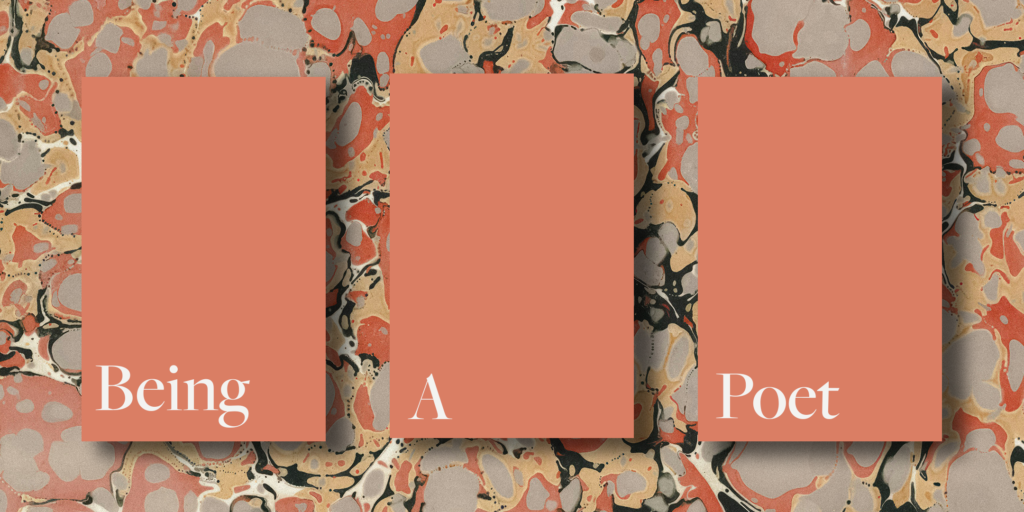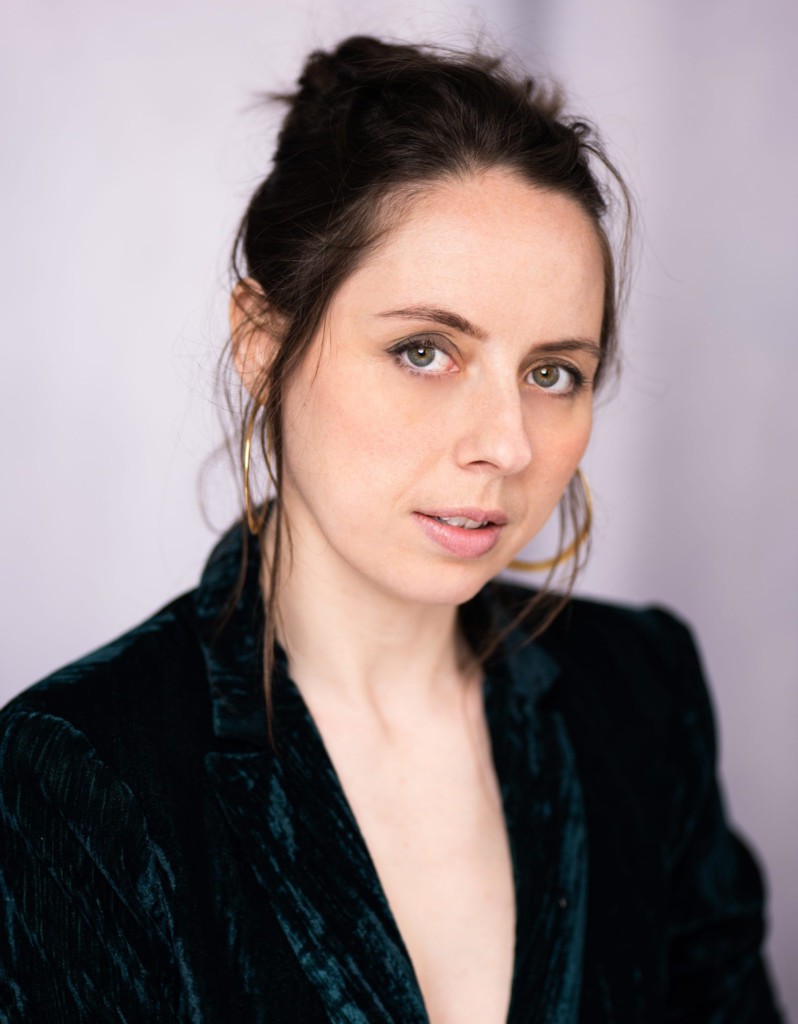In this series, we interview our tutors about poetry and its place in their world. These interviews will cover creative writing tips, excelling in a poetry workshop, building a literary career, and finding your poetic voice. Here’s Helen Calcutt on how to develop poetic sensitivity to the spaces between.

How can poets use the ‘spaces between’ words or moments to add emotional depth to their writing?
Spaces act as bridges, pauses – moments of sinking into experience. From here, we naturally begin to experiment with how we write about a moment, and this is where the real play begins.
When we write about the concrete details of something that’s happening, we’re quite often attempting to illustrate something in a ‘Paul said no to Sandra’ kind of way. Focusing on what ‘holds’ the moment (the negative spaces around it, for example) or turns it, snags a different part of the brain, I think. Because we’re being encouraged to feel into the global elements of a situation, our writing becomes a kind of search. We release the pressure to know and become more open to discovery. From this space, we begin to access an emotional layer that hasn’t been imposed on the writing but emerges organically; something we didn’t expect to find, yet perhaps needed to.
What are some practical ways writers can experiment with negative space or pauses, whether on the page or in a live setting?
Get in your body.
Put yourself in front of the door before you open it and pause there. What does this feel like somatically? What does the space around you, in relation to your body, feel like? Focus on weight, alignment, the connection between you and the door, the stillness. That’s a really good place to start, and a great way to understand the actual physical impact of a ‘pause’.
Also, think about your why (why are you opening the door, because I told you to, or are you seeking something?)
On the page, take what you’ve written above.
How can you recapture that sense of holding before an action? What is the space in front of you on the page, how can it ‘hold’ the words? Go in like an explorer. Try placing a single word on a line… how much space can you comfortably allow before going onto the next where the thought continues? In live performance, play with silence. Pause longer than feels comfortable. Notice how that lands in you.
Can you share tips on how to find inspiration in those subtle, in-between moments that often go unnoticed?
Practice regular self-enquiry. It hones your observational skills and sharpens your ability to notice others and the moments they move through. I’ve always been attuned to my own behaviours, and those of people around me, ever since I was a little girl. I’m drawn to, almost waiting for, those little chinks of activity. They’re fleeting, almost imperceptible, but often significant, subtle cues that signal a shift. It feels wired in me, almost like a natural, obsessive function, and this instinct is what allows me to notice and capture the smaller moments others often miss.
Notice others as if your life depended on it! Go to a coffee shop and sit with the intention of being still in your body and just observing what other people do. Watch their hands, that’s a great place to start. How do they use them to speak, or guard, in conversations. How do they lift a hand to reach for the coffee cup? What shape does this create, how does it form contact with the air? Where is the hesitation before touching someone else (or not). An intention either abandoned or followed through, is a story.
Pay attention to the transitory. The moment after someone leaves a room, the breath before a confession, the stillness just before movement begins. As a choreographer, I’m constantly observing these in-between spaces – they hold a kind of magic and unlock a necessary pattern I need to follow to understand the greater whole. Carry a notebook and jot down as many in-between moments as you can. Explore in your writing, the difference between these spaces and the actual events. What separates them?
Go back to the why. Why does my finger want to strike this letter on the keyboard, what’s the physical sensation before it happens? Is it a pulling downwards feeling, a resistance, a sense of floating? What story is appearing here because of this sensation, and what it’s telling me?
Quiet junctures carry the most emotional weight.Observe where this is happening in any given experience and describe it. Go for words that are sensory, that capture something tangible in the moment.
How does exploring tension and release in a poem’s rhythm help create a more engaging reading experience?
Tension and release are the stuff of life – both in dance and poetry. And they need each other. The most beautiful thing to me, is when a dancer finds all that unravelling in a moment through the body: and it’s the same in a poem. Poems build, often through the rhythmic drive of an idea as it’s sent through the line, to an apex, that then unfolds. This is storytelling at its best. It’s physical either way, and pulls us in, and this is when a connection happens. And we’re always seeking that, above anything else.
What advice would you give to poets trying to express feelings or ideas that seem beyond the reach of words?
Start with the body.
We store every experience in our cells, and they function as sensation – ranging from numb, to barely noticeable, to overwhelming. Before trying to name the feeling (because you feel you should) again, self-enquire. Sit with your body, go inside it. Sense its aliveness and just describe how that aliveness exists and/or moves through you. Is there fluttering, sharpness, slowness, a humming, a drag, a nothingness? Language may falter, but imagery born from the body – sent up and out from it – can speak what words alone can’t. So, tap into that relationship.
Also, don’t be afraid of ambiguity – often the most powerful poems don’t explain anything, they provoke.
Are there any exercises or writing practices you recommend for developing a sensitivity to the pauses and transitions in everyday life?
Sit
with your own transitions and pauses
Be in your body
with an awareness (perhaps whilst having a cup of tea)
Be totally with yourself, and watch
how you move
through spaces
through moments before an ‘act’,
get comfortable with not making sense
‘feel into’ and quite simply describe
the softness or holding
before the lingering moments after

Helen Calcutt is a poet and choreographer working at the intersection of language and movement. She is artistic director of Beyond Words and the creator of The Hypha Method – a pioneering gestural language system for translating & articulating text within dance.
Helen’s poetry features in the Guardian, the Huffington Post, Poetry Ireland, Poetry Wales, Poetry London, Envoi, Wild Court, and many others. Somehow (Verve Poetry Press, 2020), was a PBS Winter Bulletin Pamphlet & Poetry School Book of the Year (2020). Anthology Eighty-Four (Verve Press, 2019), created in aid of the suicide prevention charity C.A.L.M. was a Saboteur Award shortlist & was a Poetry Wales Book of the Year, 2019. Her full-length collection Feeling All the Kills was published by Pavilion Poetry, April 2024.
Helen’s research into text-to-dance translation and the process of connection as communication within movement, has been supported by the Birmingham REP Theatre, One Dance U.K. and funded across 4 year’s creative enquiry by Arts Council England. She was awarded an Honorary Doctor of Letters by Loughborough University for her outstanding contribution to the arts, December 2023.
Add your Reply
You must be logged in to post a comment.